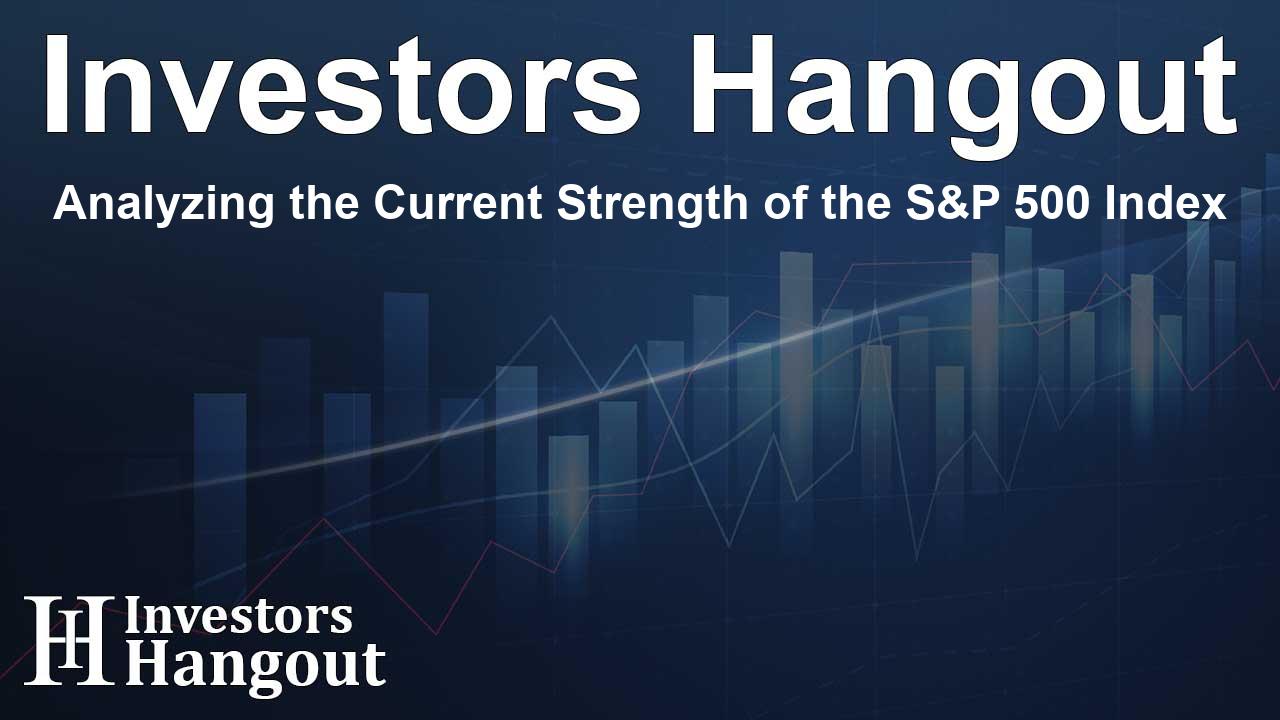Analyzing the Current Strength of the S&P 500 Index

The S&P 500: Continued Momentum Amid Market Uncertainties
The S&P 500 index has shown impressive resilience, climbing steadily thanks to a combination of favorable economic factors, including optimism around artificial intelligence and delayed tariffs. But how sustainable is this upward trend? Buyers currently dominate the market, yet even they acknowledge that this calm phase may not endure indefinitely.
Recently, the S&P 500 has recorded significant gains, propelled by positive developments such as government fiscal policies and a reduction in global tensions. These factors blend seamlessly into an environment ripe for investment, especially in technology stocks leading the AI wave. Market players, particularly those backing companies like Nvidia, find themselves swept up in the ongoing hype.
However, as the index reaches new heights, traders are starting to reassess their positions. With both the S&P 500 and Nasdaq 100 recently achieving record levels, caution becomes paramount. European indices like Germany’s DAX and the UK’s FTSE 100 mirror this bullish sentiment, but fresh investments are becoming trickier to justify as traders await new market catalysts.
S&P 500 Technical Insights — Trends in Focus
The prevailing market trend remains bullish, with many traders preferring to hold onto long positions until a clear reversal signal emerges. Currently, the Relative Strength Index (RSI) does indicate an overbought condition, but with strong momentum persisting, dip-buyers continue to play a crucial role in supporting the market.
As we analyze support levels, the 6,265 mark proves critical, being where the recent rally initiated. Should the index falter, the 6,152 to 6,166 range becomes essential, representing previous highs and reinforced by technical indicators such as the 21-day EMA. A drop below this area might signal the first significant indication of weakness in the rally.
In the event of a decline past established support, attention will shift to the 6,071 level, a post-ceasefire breakout point, with the psychologically significant 6,000 mark providing additional backing. Conversely, if the index maintains momentum, it navigates into uncharted territory, with all-time highs set at 6,333 and subsequent levels of 6,400 and 6,500 acting as natural targets.
Market Dynamics: Fed's Role and Powell's Hesitation
The prospects of rate cuts from the Federal Reserve play a significant role in boosting market confidence. However, Fed Chair Jerome Powell remains cautious amidst persisting inflationary pressures, particularly from elevated tariffs. Whispers of a rate cut have found traction, with growing speculation for September adjustments gaining ground.
Current evaluations suggest a 78% probability of a rate cut occurring next month, reflecting a notable shift in trader sentiment. Meanwhile, expectations for immediate moves are low, particularly following a robust jobs report which casts doubt on conventional timing for adjustments.
Upcoming economic indicators such as consumer price index (CPI) and producer price index (PPI) announcements could fuel market dynamics ahead. Amid this backdrop, traders closely monitor smaller data points, including jobless claims, which serve as markers of market sentiment.
Cautious Optimism or Impending Volatility?
Trade negotiations remain a sword hanging over the market's head. Much like a tightrope walker balancing precariously, the market reflects this duality—exhibiting strong bullish momentum while remaining vigilant of potential downside risks. The deadline for trade discussions looms, and lack of resolution could rekindle tariff discussions, which significantly might impact trading sentiment.
As we move forward, traders must remain aware of these underlying tensions and be prepared for fluctuations that may surge as uncertainty builds. The market walk remains challenging yet thrilling; optimism continues to blend with caution as participants navigate this complex landscape.
Frequently Asked Questions
What is currently driving the S&P 500's momentum?
The recent surge in the S&P 500 is driven by factors like AI investments, supportive fiscal policies, and easing trade tensions.
What key levels should traders monitor on the S&P 500?
Traders should keep an eye on the 6,265 and 6,152–6,166 levels as critical support and resistance barriers.
How might the Federal Reserve's actions influence the market?
The Fed's decisions regarding interest rates can significantly impact market dynamics, fueling trader confidence or inducing volatility.
What upcoming economic data should traders watch?
Key reports including the CPI and PPI, as well as retail sales figures, can sway market sentiment considerably.
What risks exist for the S&P 500 going forward?
Unresolved trade negotiations and potential shifts in monetary policy present risks that could lead to increased market volatility.
About The Author
Contact Henry Turner privately here. Or send an email with ATTN: Henry Turner as the subject to contact@investorshangout.com.
About Investors Hangout
Investors Hangout is a leading online stock forum for financial discussion and learning, offering a wide range of free tools and resources. It draws in traders of all levels, who exchange market knowledge, investigate trading tactics, and keep an eye on industry developments in real time. Featuring financial articles, stock message boards, quotes, charts, company profiles, and live news updates. Through cooperative learning and a wealth of informational resources, it helps users from novices creating their first portfolios to experts honing their techniques. Join Investors Hangout today: https://investorshangout.com/
The content of this article is based on factual, publicly available information and does not represent legal, financial, or investment advice. Investors Hangout does not offer financial advice, and the author is not a licensed financial advisor. Consult a qualified advisor before making any financial or investment decisions based on this article. This article should not be considered advice to purchase, sell, or hold any securities or other investments. If any of the material provided here is inaccurate, please contact us for corrections.
